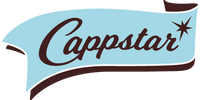Specialty Frozen Beverages
by Michael Rubin
From Coffee Talk Magazine, August 1997
From Seattle, the specialty coffee capital of the U.S., through the rest of the country, the specialty coffee phenomenon has crossed all social borders. Coffeehouses have become a popular social destination for both the middle-aged “post-disco” crowd as well as for younger generations, who often lean toward the low-key ambience of a cafe over the cacophony of more traditional evening destinations. The combination of exhilarating concoctions and stimulating conversations appears to be a viable replacement for the more expensive cocktails and cover charges at bars and nightclubs.
As coffee’s influence has spilled over into the realm of entertainment, the coffeehouse is uniquely situated to satisfy the rapidly evolving appetite for new and unique beverages. Look on the menu board at that popular new spot that just opened around the corner from you: frozen mochas, latte’ vanillas, vanilla lattes, chai, mint mochas, Italian sodas, granitas, Oreo shakes, smoothies, frappes, freezes, snickerdoodle mochas.
Early on, U.S. coffeehouse owners recognized the need to offer frozen coffee beverages. With sales of hot coffee falling each year as warmer weather arrived in the spring and summer months, frozen coffee was a natural to boost sales in this traditionally slow period.
So, baristas began to set up granita machines in their shops. They discovered that the granita machine was an excellent marketing tool. But with every new category comes a learning curve. Along with its excellent promotional attributes, the granita machine also had an Achilles’ heel. For a granita machine to operate properly, the product in the machine must have a Brix level between 11 and 22. Brix is a measure of the ratio of sugar to water in a solution. Too much sugar and the product will never freeze; too much water and the product will freeze solid.
Recognizing the dilemma, beverage manufacturers began creating mixes that, when poured into the granita machine, had the proper Brix level. With a new generation of improved granita machines, the mixes are an excellent option as a vehicle to make frozen or coffee beverages.
Along with the granita machines came a new wave of powerful commercial blenders with the ability to quickly produce customized frozen beverages. Coffeehouse owners created frozen beverage recipes that were well received, but they were time-consuming to make and the results tended to be inconsistent. In answer to this problem, companies created instant super-premium mixes that quickly and simply re-created the coffeehouse recipes. Some mixes require the addition of coffee or milk; others just require water. Either way, these mixes have been well received and are widely used.
Just Starting Up?
Any business offering specialty frozen beverages must have recipes, menus, and menu boards that reflect the store’s particular theme. The business theme and beverage names must be consistent with each other. By creating unique proprietary beverages, served with an appealing presentation, you let your customers feel that these were specially created for them.
Such special drinks are simple to do. Try blending Oreos, M&M’s, or several of your espresso beans into your mochas. Take a cue from the ice cream business. Some manufacturers offer mixes that can be used as a beverage base. Blend these bases with espresso to create signature mochas, lattes, or vanilla lattes. Use the same base to create smoothie-type drinks by adding fruit or fruit juice. Whipped cream, flavored syrups, and shaved chocolate are great tools for adding a personal touch to any of these types of beverage. As in any competitive market, it’s the attention to the small details that will set your beverages apart.
Time and Again
Large chains are aware of the importance of consistent quality. They educate their employees so that the frozen mocha served today will be the same as the one served tomorrow. If today’s customer comes in tomorrow, he or she will find no variance in the flavor and consistency. The incredible value of consistency should never be overlooked. If you make your beverages exactly the same every time, from employee to employee, if you create a company wide formula that ensures consistency, your sales are sure to grow. Independent operators lie awake nights trying to figure out the age-old question, “Why aren’t the customers coming back?” They should look closely at three areas: product quality, product presentation, and consistent preparation.
How to Choose New Products
Choosing new products can be an arduous feat. There are so many choices. You can read the trade magazines and send for samples. You can inquire at your local distributor. Both are excellent options. I recommend that you use a combination of the two methods with one added ingredient. Go to your nearest Starbucks, Gloria Jean’s, 2nd Cup, or Au Bon Pain and see what’s on their menu. Think about it. These companies spend millions of dollars each year marketing and advertising, trying to educate consumers on the virtues of the products they offer. Take advantage of this incredible opportunity. Offer products similar to that of the big boys. Your customer base comes from the same pool of consumers that is being educated by the Starbucks of the world. So, if Starbucks has Frappuccino, carry your own up-scale version to satisfy your customers who want a frozen coffee-chocolate blended drink. If they serve chai, it is appropriate that you serve your own special chai beverage. Whatever products you decide upon, always try to add your own creative touch. If the chains do their chai hot or over ice, do yours blended with ice or in a granita machine.
Set your business apart.
Pictures are a much more powerful selling tool than the written word. When sourcing your products, make sure to ask if point-of-purchase materials are provided. Most companies will do so at no charge, since the easier they make it for your customers to purchase, the more often you will order from them.
Michael Rubin is the president of Cappuccine, Inc., a manufacturer of specialty frozen drink mixes based in southern California.
